Once I told a butterfly friend I was moving to south central Texas and there were potentially 150 sps. of butterflies in the area. He replied, "yeah, but HALF OF THEM are skippers!" He was only slightly exaggerating. It is more like the No. Am. average, a third. But I like skippers. Most are small, and orange or brown but others range from spiffy to fancy. There are a myriad of types, often hard to ID, but luckily in any given area, usually only a couple small groups can be confusing, as say the Duskywings.
They are considered primitive butterflies, the earliest lineage. Some call them TRUE butterflies. Everything else came later. Many sit in a cool jet plane posture with two wings up (forewings) and two wings out flat (hindwings). Many though are spreadwings, keeping wings held out flat and spread as most moths, like the duskywings, Checkered-Skippers, and others.
Roughly a third of butterfly species in North America are skippers (well over a couple hundred). We have about 50 species of skippers in the upper Sabinal drainage, of about 145 (just me in 20 yrs.) butterfly species in the area. A third of the skippers here are scarce or rare, or vagrants though. Like everything, they key to ID is to learn the variation in your common species to better spot and identify that which is not. Males and females appear differently in some groups. About 39 of our local skipper species are shown here. Still have to process and add good pics of many, even basics like Sachem, Fiery, Eufala, etc.
We'll start small and work up.
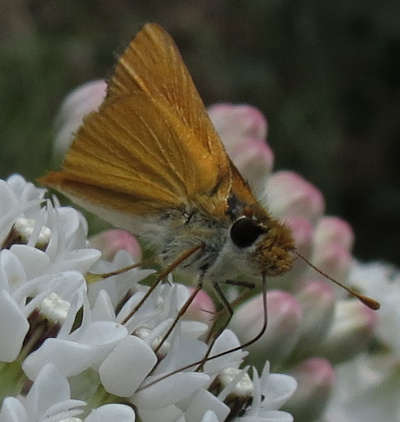
Orange Skipperling (Copaeodes aurantiaca) June 2, 2019.
The skipperlings are the smallest of them all, barely
over a half-inch long. The other type here, Southern,
has thick white vein line on ventral hindwing.
It is on Texas Milkweed.
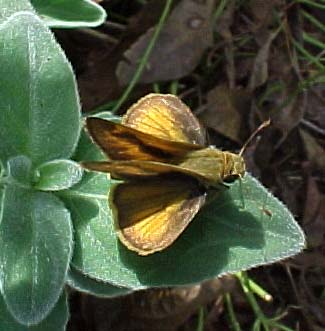
This is a male Whirlabout, which are a small skipper similar to the common Fiery Skipper. The jet plane posture: two up and two out. Forewings up, hindwings out flat.
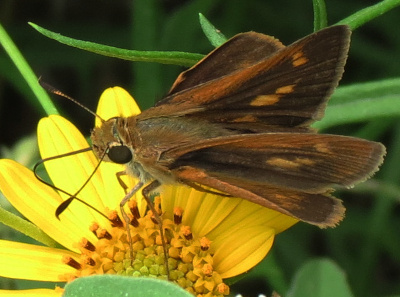
Southern Broken-Dash (Wallengrenia otho), female, Aug. 31, 2019.
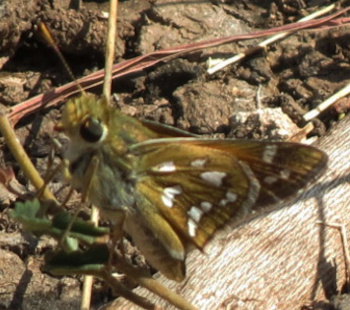
Green Skipper (Hesperia viridis) Sept. 25, 2017. These are very terrestrial and often seen on ground.
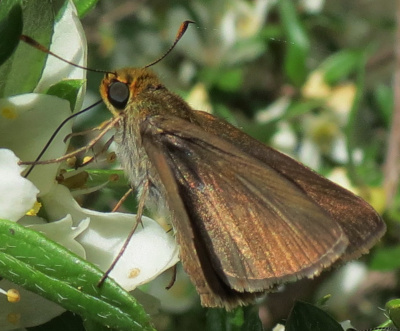
Dun Skipper (Euphyes vestris), April 29, 2018.
Males here often have yellow to orangeish heads.
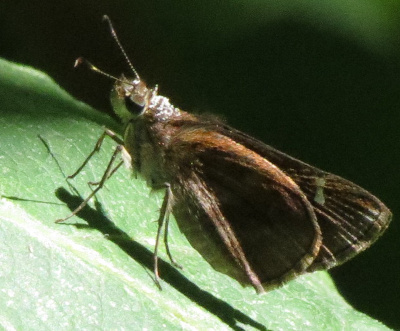
Clouded Skipper (Lerema accius), August 31, 2019.
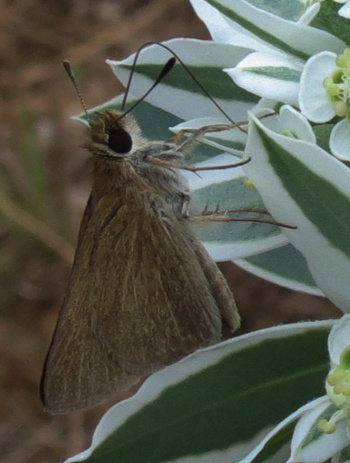
Julia's Skipper (Nastra julia), August 15, 2019.
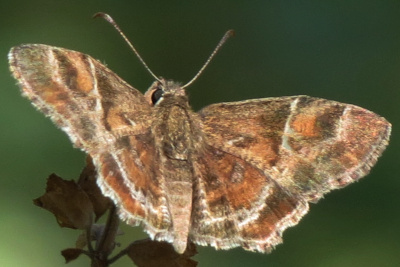
Texas Powdered-Skipper (Systasea pulverulenta) Aug. 31, 2019. These have some wild looking camo and often perch on ground where rendering them all but invisible.
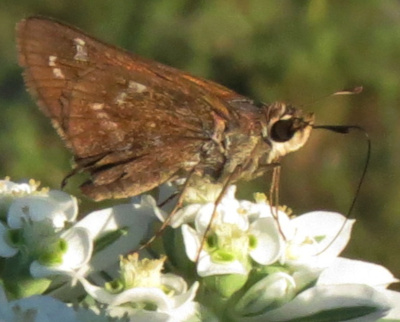
I had this labelled as Sachem, not absolutely sure, fairly sure though.
These next four are Roadside-Skippers (Amblyscirtes sps.).
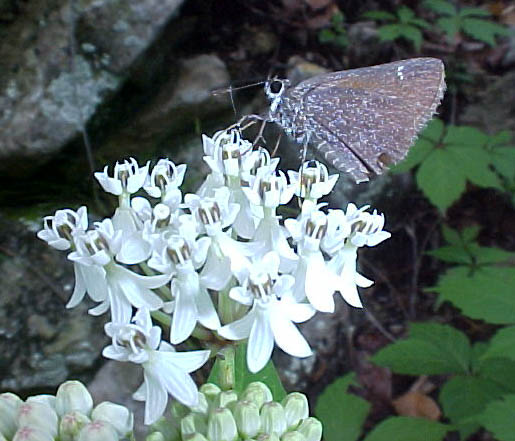
This is a Bronze Roadside-Skipper (A. aenus). Small numbers are regular in the cool shady upper canyons at Lost Maples. That is Texas Milkweed it is on. Lost Maples SNA, May 29, 2017
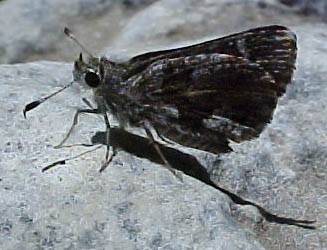
Nysa Roadside-Skipper (A. nysa), May 15, 2014. These are very terrestrial, often seen on ground. Underwing is marbled dark and light like stone.
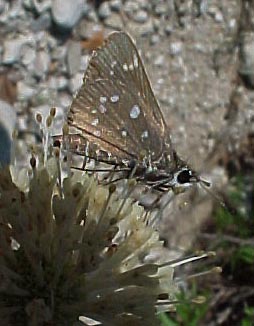
Dotted Roadside-Skipper (A. eos), June 28, 2009.
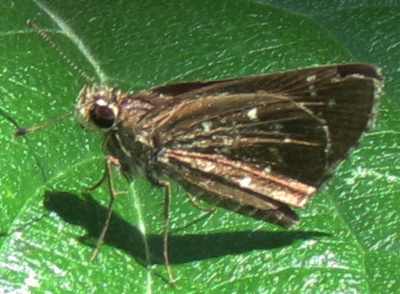
I have this labeled as Celia's Roadside-Skipper (A. celia), July 15, 2019. Pretty sure the ID is correct.
Only one Cloudywing is regular here, the Northern. Cloudywings are larger than Duskywings, and besides translucent windows in wings, the wings are unmarked.
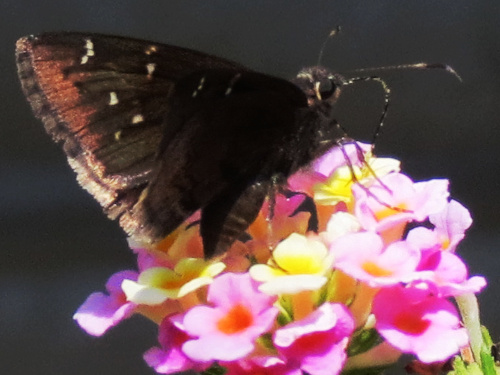
Northern Cloudywing (Thorybes pylades). The wing with lots of white dots is the dorsal left forewing. The darker velvet brown is how they start out and as they wear through the season they turn umber brown distally as scales wear off. This is our only regular Cloudywing here, never very common but small numbers present. The Coyote Cloudywing is a LTA (less than annual) vagrant. Dorsal Duskywing wings are always patterend with marbling, not uniform. Note the pollen on proboscis. Pollenator at work.
There are several big skippers with long tails. They are
called 'long-tailed skippers' as a group. This
can be confusing as one of them is named Long-tailed Skipper.
Except one, the White-striped, the others are all LTA -
less than annual - here.
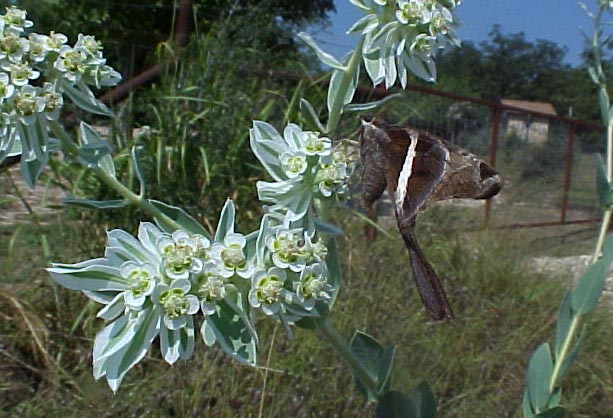
White-striped Longtail (Chioides catillus) on Snow-on-the-Mountain. On all of the big long tailed type skippers, the tails break off when worn.
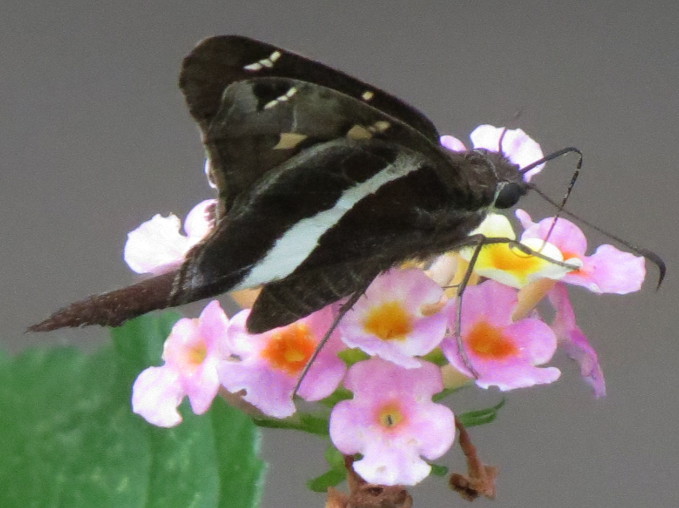
White-striped Longtail closeup. Five of the big 'long tailed' type Skipper species occur here, all are rare, except this one. Note this one is missing one of its tails and the one left is broken.
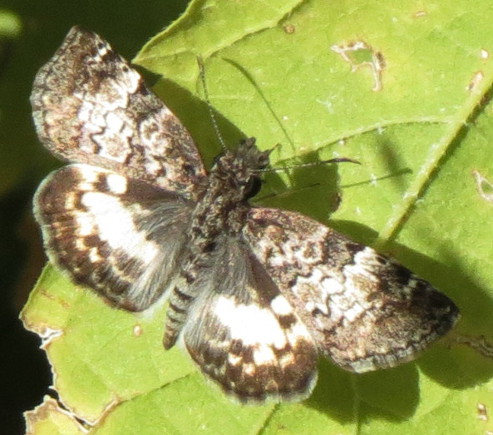
White-patched Skipper (Chiomara georgina) which is less than annual here. In 2020 I saw 3 or 4 from July to November, this one Nov. 23 was a late date.
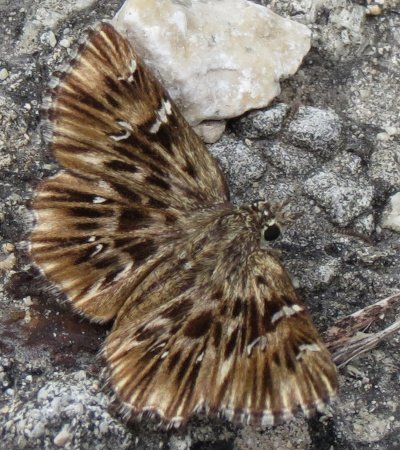
Common Streaky Skipper (Celotes nessus) is a spiffy skipper that looks like it is exploding. Another very terrestrial type with superb camo.
These next three are Checkered-Skippers (Pyrgus sps.)
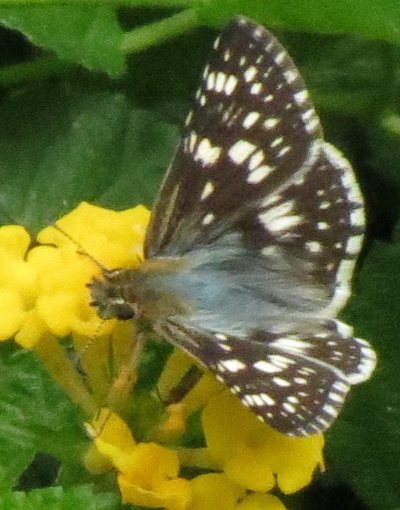
Common Checkered-Skipper (Pyrgus communis), Oct. 13, 2018.
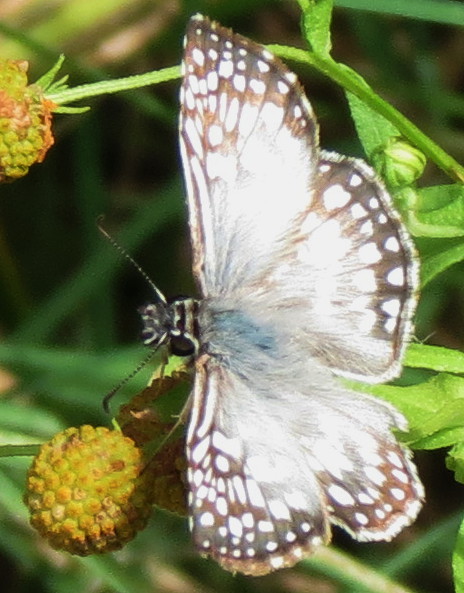
Tropical Checkered-Skipper (Pyrgus oileus) July 16, 2019.
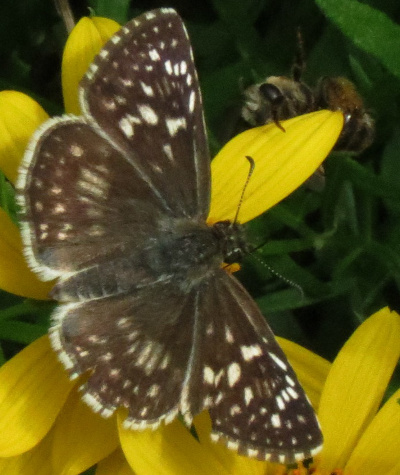
Desert Checkered-Skipper (Pyrgus philetas) July 16, 2019.
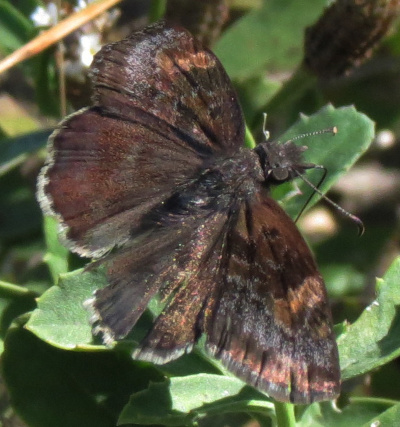
False Duskywing (Gesta gesta) Aug. 17, 2019.
Looks sorta like the Duskywings, but is not one.
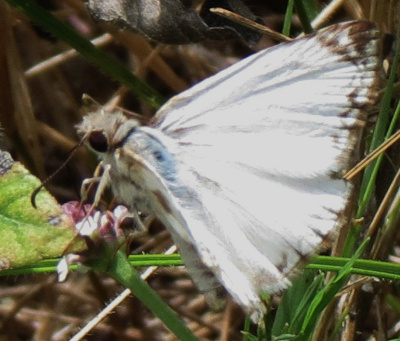
Laviana White-Skipper (Heliopetes laviana) Aug. 19, 2019. The only expected of the big White-Skippers here, and they are LTA - less than annual.
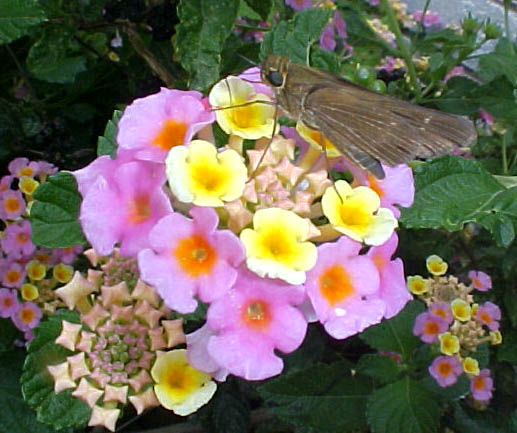
The only regular (but LTA - scarce) Panoquina here is Ocola Skipper (Panoquina ocola) These are long-winged but otherwise fairly unremarkable skippers. Some years several might be seen, other years, none.
Here are a few rare fancy skippers...
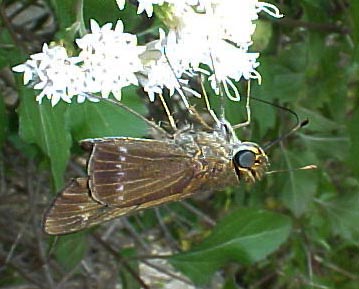
Purple-washed Skipper (Panoquina lucas) at Utopia on
Nov. 19, 2013. First Uvalde Co. record per C. Bordelon.
I couldn't get the full monty of purple sheen or
iridescence to show well but you get a hint of it.
I have two more photo records since this one.
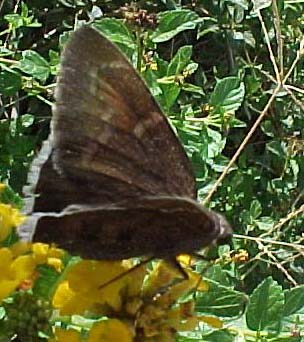
Coyote Cloudywing (Archalarus toxeus)
Common fall of 2007, otherwise it has been all but absent
until 2016 when 5 or so appeared in the fall butterfly invasion.
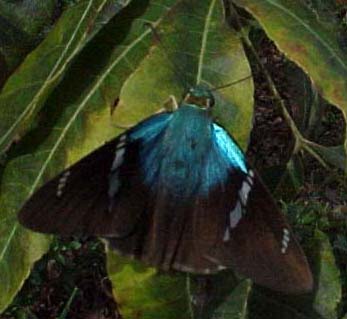
Two-barred Flasher (Astraptes fulgerator) on
Nov. 4, 2007 at Library garden, Utopia.
Only one I've seen here though one was
photo'd at Lost Maples about 2005 or so.
Saw one at the fish hatchery in Uvalde once.
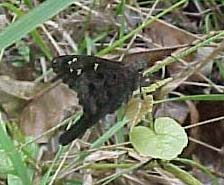
Dorantes Longtail (Urbanus dorantes) Sept. 30, 2007.
First Bandera Co. record per C. Bordelon.
Have seen a few others in Uvalde Co., one year
they got nearly regular, most years absent.
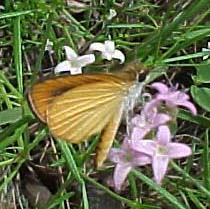
Least Skipper (Ancyloxypha numitor) near Utopia, May 10, 2007.
This was the first documented record in Uvalde Co. per C. Bordelon.
I have only seen a couple since, so, very rare here.
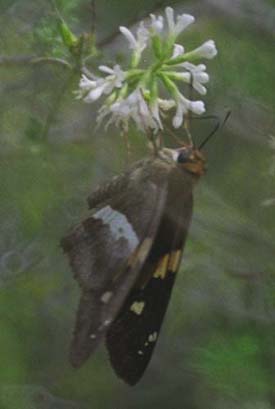
Gold-spotted Aguna (Aguna asander) Sept. 2006 at the dump in Utopia. Leave no flowers un-checked..... even at the dump. Have seen a few of this tropical vagrant, this the only documented occurrence here.
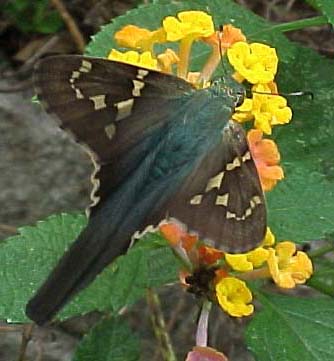
Longtailed Skipper (Urbanus proteus) is the second most regular of the big long tailed skippers here, but is still LTA - less than annual.
~ ~ ~ original page pix below ~ ~ ~
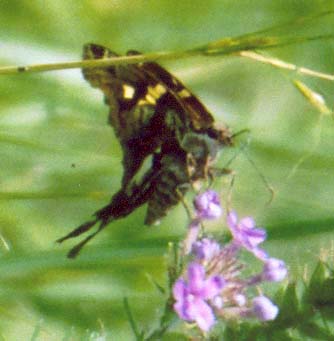
Zilpa Longtail (Chioides zilpa) May 11, 2004
(1st Bandera Co. record per C. Bordelon)
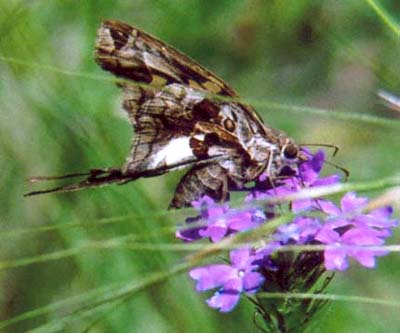
(same) Zilpa Longtail (Chioides zilpa)
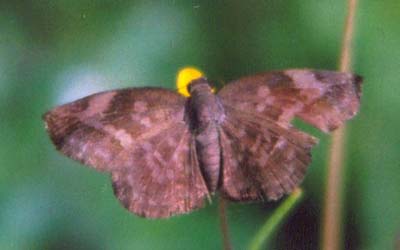
Sickle-winged Skipper (Eantis tamenund), June 15, 2004,
first Bandera Co. record per C. Bordelon.
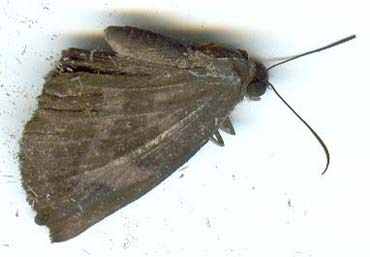
Sickle-winged Skipper (Eantis tamenund)
(same - 6-15-04)
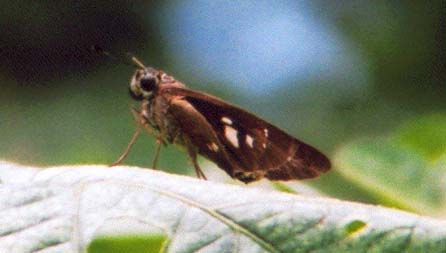
Brazilian Skipper (Calpodes ethlius) - Uvalde Co.
(Within half a mile of Bandera County)
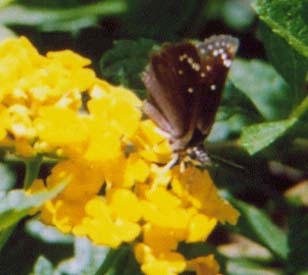
Common Sootywing (Pholisora catullus) - Uvalde Co.
(Within half a mile of Bandera County)
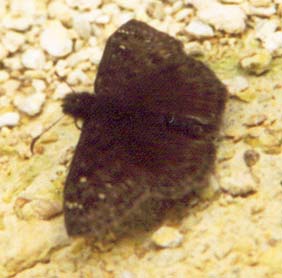
Juvenal's or Horace's Duskywing (Erynnis juvenalis or horatius) I think probably Juvenal's.
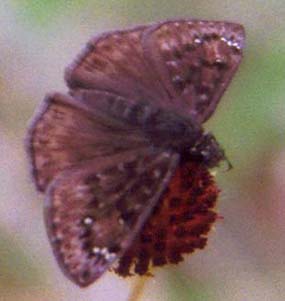
Duskywing (Erynnis sps.) - Probably Horace's.
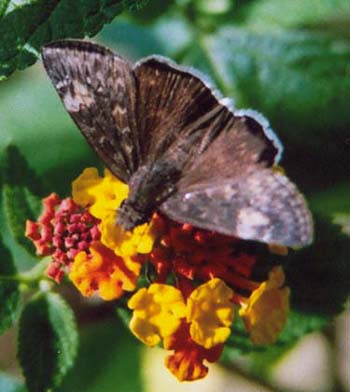
Funereal Duskywing (Erynnis funeralis). Note light patch on dark leading edge of forewing.
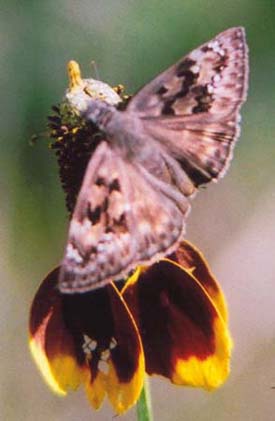
Mournful Duskywing (Erynnis tristis)
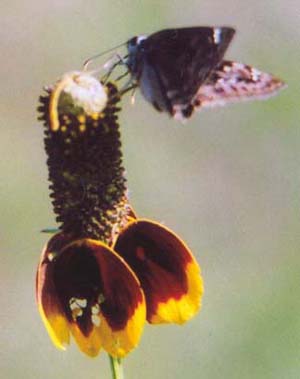
Mournful Duskywing
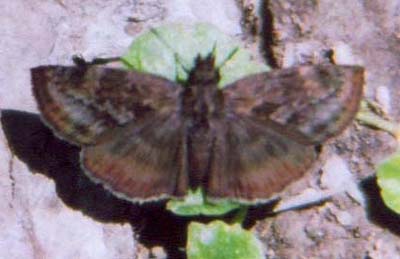
False Duskywing (Gesta gesta was G. invisus) - Uv. Co.
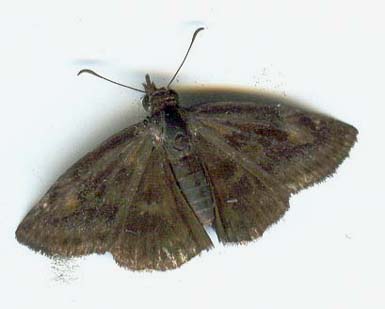
False Duskywing (Gesta gesta - was G. invisus) - Bandera Co.
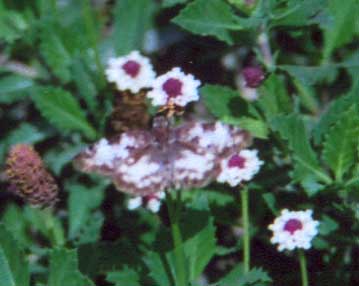
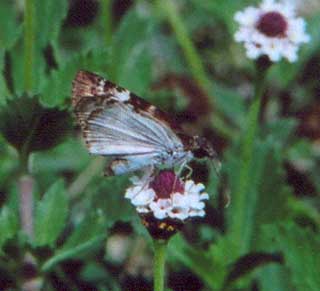
White-patched Skipper - male - rare here, Sept. 16, 05 Utopia
Amazing how the white patch on dorsal wings (especially forewings)
perfectly match the frogfruit flowers. What camo! (Chiomara georgina)
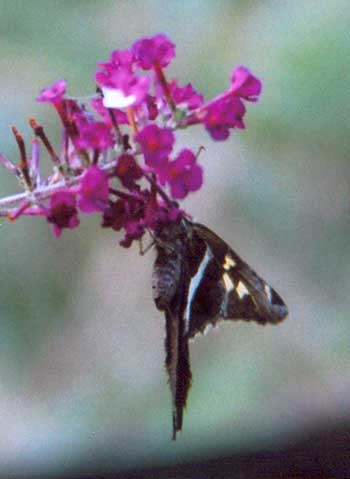
White-striped Longtail (Chioides albofasciatus)
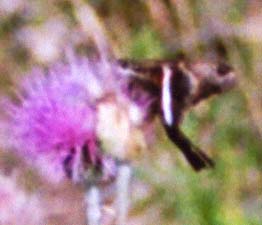
White-stripe Longtail (Chioides albofasciatus)
(1st Bandera Co. record per C. Bordelon, May 28, 2004)
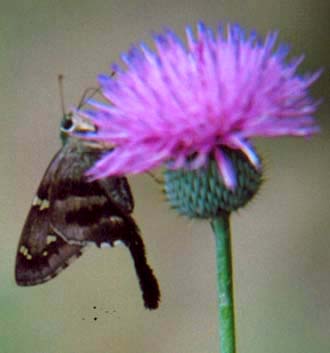
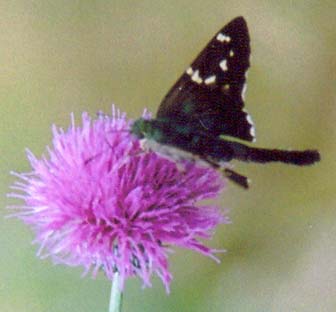
Long-tailed Skipper (Urbanus proteus)
(1st Bandera Co. Record per C. Bordelon, June 9, 2004)
Grass Skippers
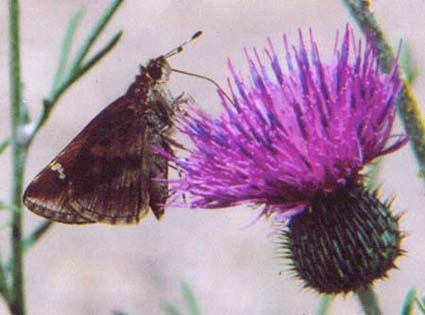
Clouded Skipper (Lerema accius)
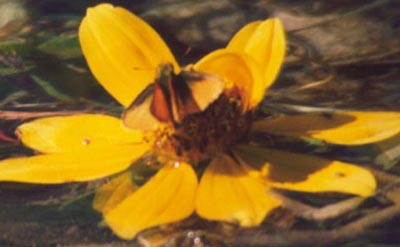
Skipperling sps.
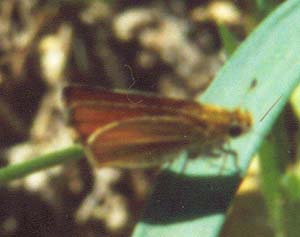
Southern Skipperling (Copaeodes minima)
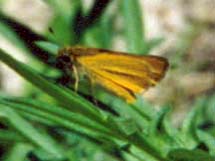
Orange Skipperling (Copaeodes aurantiaca)
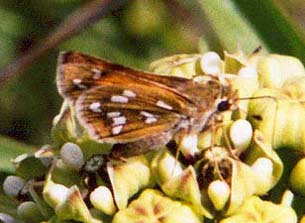
Green Skipper (Hesperia viridis)
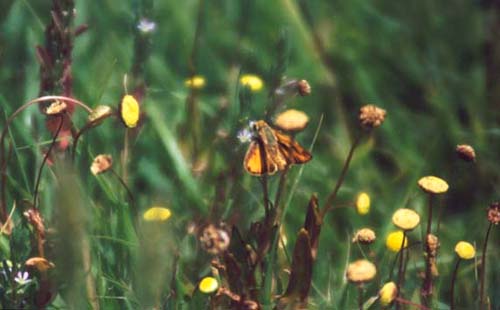
Fiery Skipper (CA) (Hylephila phyleus)
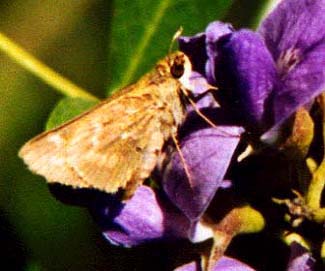
Sachem (Field Skipper) (Atalopedes campestris)
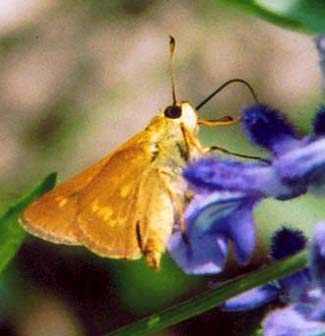
Southern Broken-dash (Wallengrenia otho). Our only rusty rufous skipper. Note on ventral hindwing the diagnostic backwards yellow 3.
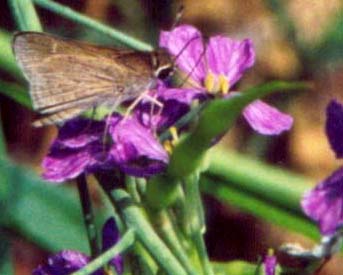
probably a Dun Skipper
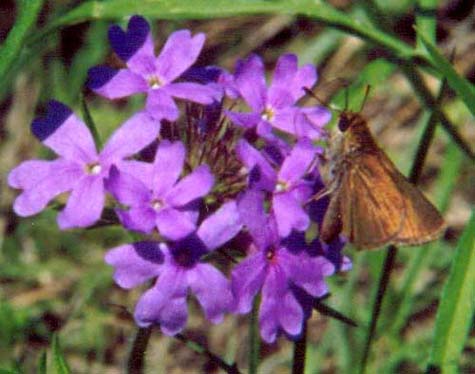
probably Dun Skipper
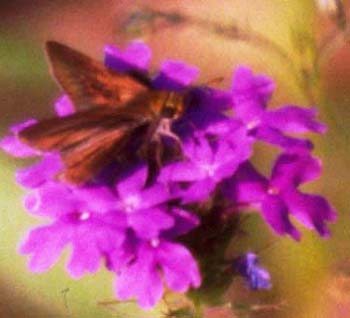
Skipper sp. 3
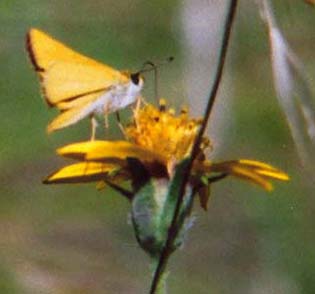
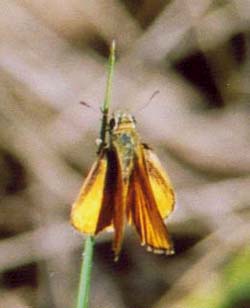
Skipper sp. 5
Roadside Skippers
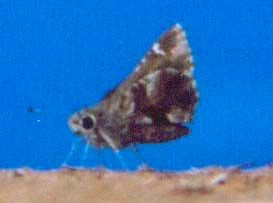
Nysa Roadside-Skipper (Amblyscirtes nysa)

Dotted Roadside-Skipper (Amblyscirtes eos)
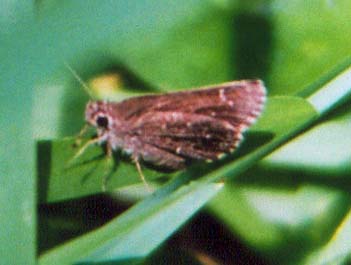
Celia's Roadside-Skipper (Amblyscirtes celia)
Swallowtails
Whites, Yellows, Sulphurs, & Oranges
Hairstreaks
Blues
Metalmarks
Fritillaries
Patches, Crescents & Checkers
Brushfoots
Satyrs
Snouts
Monarchs
Rare Butterflies
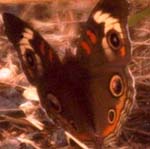
To Butterfly News
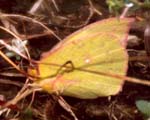
Old Butterfly News

To Dragonfly and Damselfly Pics

To Bird Pics
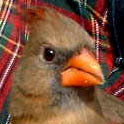
To Current Bird News
Birds
Utopia Birds
Birding Sites
Bird List
Bird Photos
Bird Guide
Reports from Lost Maples
Winter Bird Count
Butterflies
Butterfly Photos
Butterfly News
Butterfly List
Rare Butterflies
Dragonflies
Critters, Bugs, & Stuff
Lost Maples
Garner State Park
Local Site Guide
Home

Our E-mail
mitch @ utopianature.com
 All photographs within this site are copyrighted
All photographs within this site are copyrighted